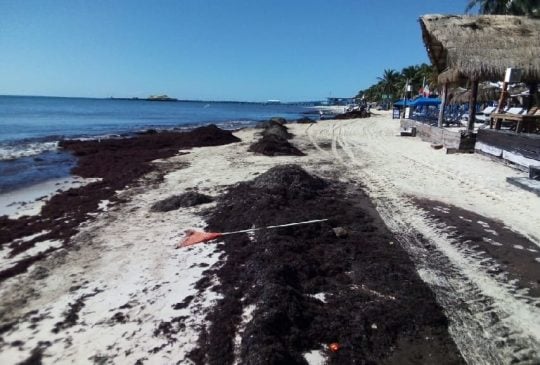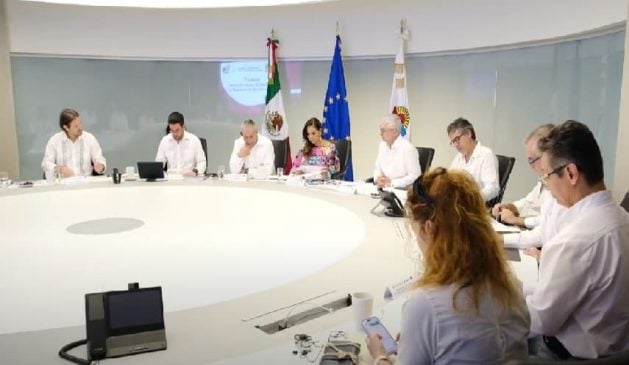Cancun, Q.R. — The state of Quintana Roo announces the construction of a centre for a long-term sargassum solution that will see the seaweed turned into biofuel. On Friday, Governor Mara Lezama made the announcement with Alicia Bárcena Ibarra, the Secretary of Environment and Natural Resources of Mexico.
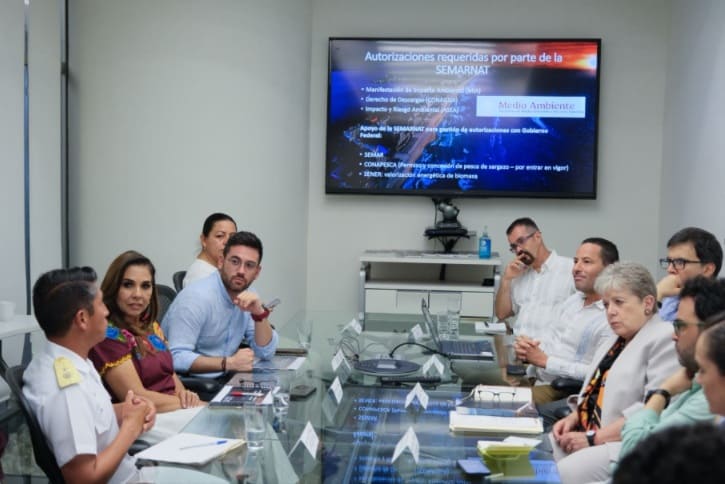
“The creation of the Comprehensive Sargassum Sanitation and Circular Economy Centre aims to protect the environment, public health and the state’s sustainable development,” said Governor Lezama.
This Centre seeks a long-term solution to sargassum management and wastewater treatment that mitigates environmental and public health risks, stimulates the local economy and shared development, with concrete actions to protect beaches and the families who depend on tourism.
Governor Lezama stated that the Comprehensive Sargassum Sanitation and Circular Economy Centre will allow for efficient monitoring, management, collection and transportation of sargassum, as well as harnessing it as an economic resource, rather than merely viewing it as a problem.
“With the Comprehensive Centre for Sanitation and Circular Economy, we will turn environmental liabilities into economic assets,” she said.
Governor Lezama added that to reach this point, a study, Sargassum, Sludge and EMR Valorization, was conducted, which was endorsed by the certifying agency Aenor-Mexico.
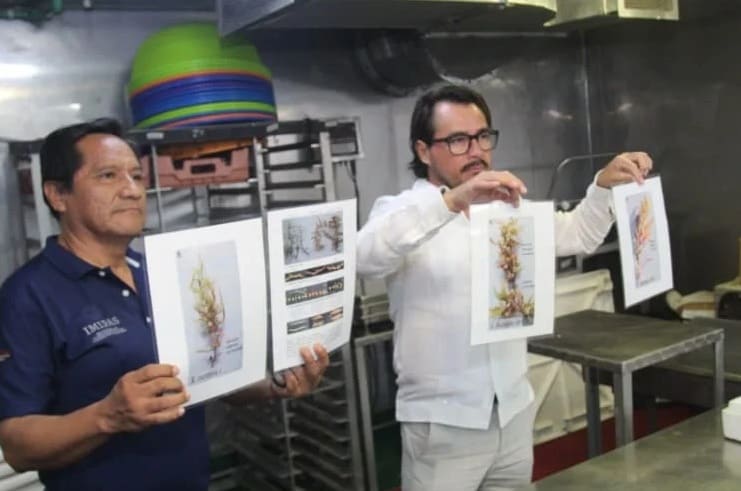
The official findings of that study will not be released publicly until November. However, the findings made by the scientists and researchers who spent two weeks at sea has been used in the development of the up-and-coming Sargassum Centre.
Óscar Rébora who heads the Secretariat of Ecology and Environment (Semar), explained that the Centre will be a benchmark for research, innovation and coordinated action to solve the sargassum problem efficiently and responsibly.
He says the Centre will transform waste into useful resources through recovery, reuse and value-generating processes. In addition, advanced wastewater treatment technology will be implemented to help maintain quality and prevent health risks.
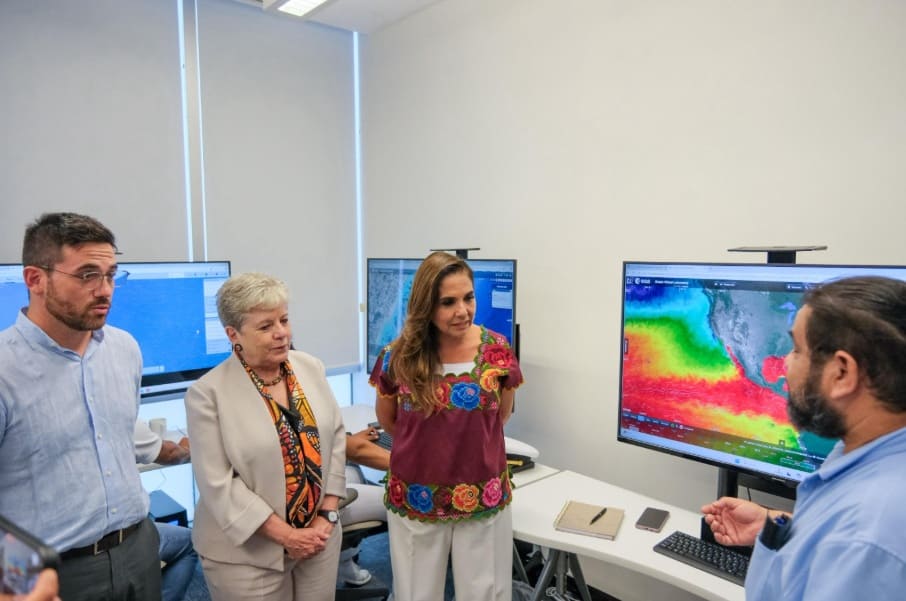
This project includes monitoring, comprehensive management, collection and transportation of sargassum, the implementation of three wastewater treatment plants in Cancun’s hotel zone and biodigestion of sargassum, organic waste and pruning material.
The state project also includes the production and marketing of biomethane (natural gas) from the collection of sargassum.
On Friday, authorities toured the state’s Sargassum Monitoring Centre of Quintana Roo. Joining them was Alicia Bárcena, who has been helping the state work on the long-term sargassum solution project.
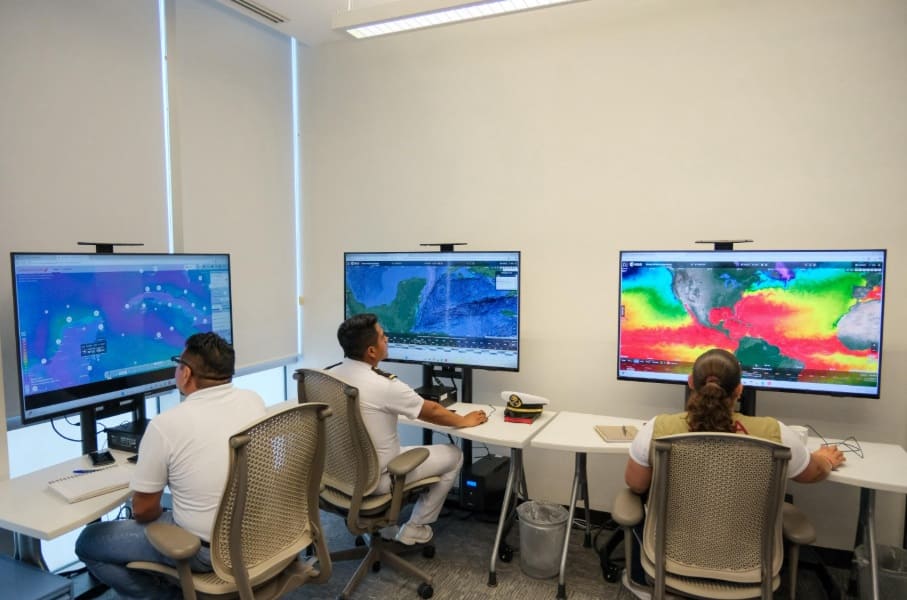
Coordinator of the Monitoring Centre, Esteban Amaro, explained the technological equipment they have and how it it used to predict the path and volume that the algae traveling through the Caribbean.
Governor Lezama emphasized the importance of the Centre as it is essential to prevent and gather information regarding a natural phenomenon that ultimately affects the Quintana Roo coast.
After the tour, Secretary Alicia Bárcena congratulated those who put so much effort into this Monitoring Centre which uses European satellites that greatly assist in the prediction work.
“What they’re doing here in Quintana Roo, in cooperation between the State Government and the Navy, is very important, especially for having information on how this phenomenon will affect us.
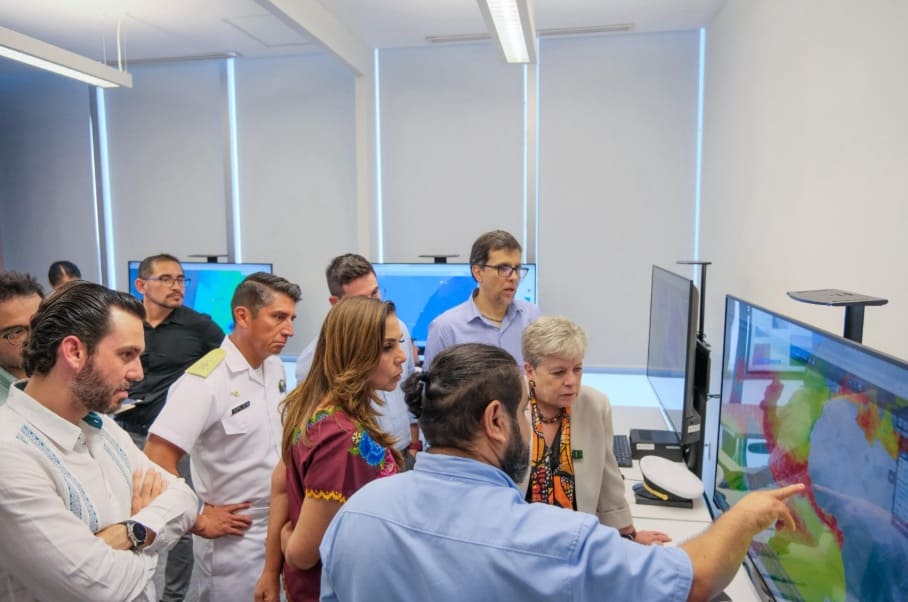
“It provides us with timely satellite information and allows us to identify critical points and take action,” said Bárcena.
Esteban Amaro explained how they model the Caribbean Current and how it carries sargassum patches toward the Yucatan Peninsula. Sea temperature, current simulations, prevailing winds and all oceanographic and atmospheric components are considered to predict the path of the sargassum.
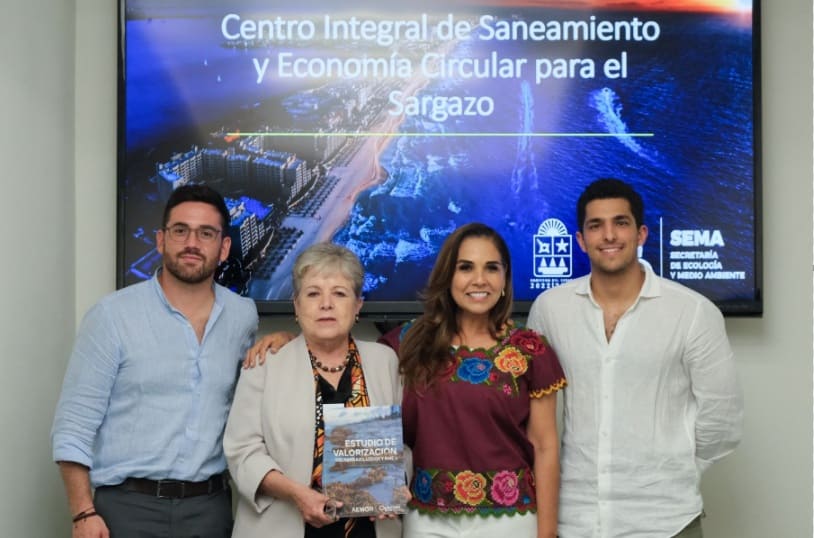
The Centre relies on the services of the European Space Agency’s Sentinel 2 satellite, which is the only satellite capable of observing sargassum. Esteban Amaro added that this allows them to know when the seaweed is passing by and how much is likely to reach Quintana Roo shores.
In June, the Secretaría de Marina reported an estimated 37,600 tons of sargassum for the coast of Quintana Roo coast this year. At that time, Alicia Bárcena Ibarra said they were working “to create a circular economy model where we can really demonstrate that it’s possible to use waste in a very different way.”
